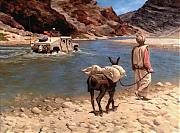Theater Military Advisory and Assistance Group (TMAAG) by Brigadier General Thomas M. Jordan (USA Ret.) at SWJ Blog
With the newly released publication of its principal operational manual, FM 3.0, the Army defined the principal conceptual underpinnings which will drive operational concepts over the next 10-15 years. The latest edition recognized the importance of understanding the complexity of the operational environment, and the nature of persistent conflict where the application of the military element of power is just one of the key ingredients necessary to achieve success. In light of this understanding, the Army adapted and raised the importance of stability operations onto an equal footing with combat operations. While the Army has made some important changes in training to implement this idea, the pending HQDA approval and resourcing decision of the Theater Military Advisory and Assistance Group (TMAAG) design and implementation strategy represents a visible and demonstrable investment in resources that reinforces the Army commitment to building partnership capacity (BPC) in an uncertain world. The proposed implementation strategy would establish one TMAAG for USARSO in FY10 (EDATE: 16 Oct 09) as proof of principle (PoP). The PoP would test the concept and make appropriate refinements as part of the overall determination to resource additional TMAAGs.
TMAAG’s origin was the Army’s “Unified Quest 2007” series of seminar wargames that supported the Chief of Staff of the Army’s (CSA’s) annual study plan. One of the resulting insights was a potential gap in the Army’s ability to meet Combatant Commanders' daily operations requirements regarding theater security cooperation, military engagement, and Building Partnership Capacity (BPC). The CSA directed TRADOC, and in turn, the Combined Arms Center at Fort Leavenworth, Kansas as the lead to develop an operational concept and organizational solution to the perceived gap...












Bookmarks